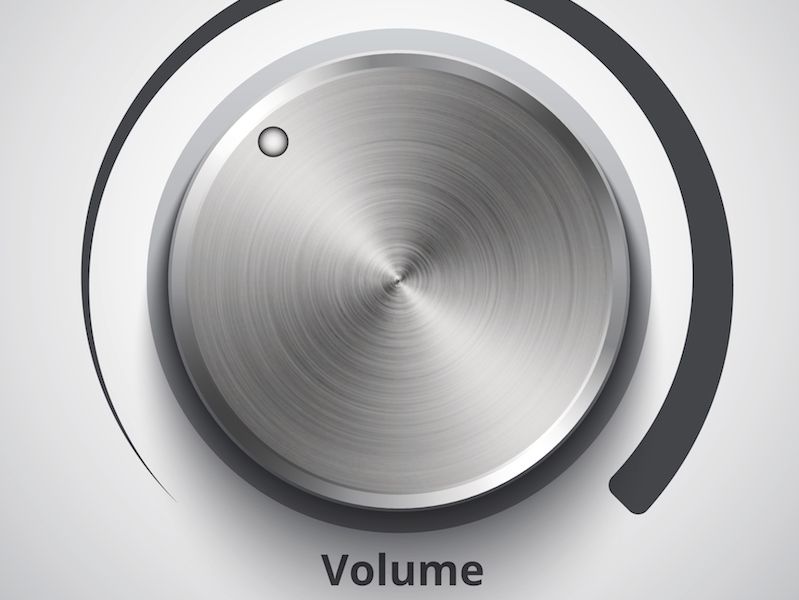
Have you ever seen the “Beware of Sharks” sign when you’re at the ocean? It’s easy to understand that you shouldn’t disregard a warning like that. You may even reconsider swimming at all with a sign like that (if the sign is written in big red letters that’s especially true). For some reason, though, it’s difficult for people to pay attention to warnings concerning their hearing in the same way.
Current studies have found that millions of individuals disregard warning signs regarding their hearing (there’s no doubt that this is a global concern, though this research was exclusively carried out in the UK). Part of the problem is awareness. It’s rather intuitive to be afraid of sharks. But fear of loud noise? And the real question is, what volume level is too loud?
Loud And Dangerous Sound is Everywhere Around us
It’s not only the machine shop floor or rock concert that present dangers to your hearing (not to downplay the hearing risks of these situations). Many common sounds can be dangerous. That’s because it’s not only the volume of a sound that is dangerous; it’s also how long you’re exposed. Your hearing can be damaged with even low level noises like dense city traffic if you’re exposed to it for more than two hours at a time.
Read on to find out when sound becomes too loud:
- 30 dB: Normal conversation would be at this sound level. You should be perfectly fine around this level for an indefinite time period.
- 80 – 85 dB: An air conditioner, dense traffic, and a lawnmower are at this volume. After about two hours this level of sound becomes damaging.
- 90 – 95 dB: A motorcycle is a practical example of this sound level. This level of exposure gets hazardous in as little as 50 minutes of exposure.
- 100 dB: An oncoming subway train or a mid-sized sporting event are at this volume (depending on the city, of course). 15 minutes of exposure will be enough to be dangerous at this sound level.
- 110 dB: Do you ever turn the volume on your earpods up to max? On most smartphones, that’s right around this level. 5 minutes will be enough to be harmful at this level.
- 120 dB and over: Any sound over 120 dB (think loud rock concerts or extremely large sports events) can result in instant damage and pain in your ears.
How Loud is 85 Decibels?
Generally speaking, you should look at anything 85 dB or higher as putting your hearing in the danger zone. But it can be hard to distinguish how loud 85 dB is and that’s the problem. It’s not tangible the way that a shark is tangible.
And that’s one of the reasons why hearing warnings often go neglected, especially when the sound environment isn’t loud enough to cause pain. Here are a couple of possible solutions:
- Get an app: There isn’t an app that will immediately protect your ears. But there are a number of free apps that can work as sound level monitors. It’s hard to assess what 85 dB feels like so your hearing can be damaged without you even knowing it. Using this app to keep track of sound levels, then, is the solution. This will help you establish a sense for when you’re entering the “danger zone” (and you will also recognize right away when things are getting too loud).
- Sufficient training and signage: This goes for the workplace, in particular. The real dangers of hearing loss can be reinforced by signage and training (and the benefits of protecting your hearing). Additionally, just how noisy your workspace is, can be clarified by signage. Helping employees recognize when hearing protection is suggested or required with proper training can be really useful.
If You’re in Doubt, Protect Yourself
Apps and signage aren’t a foolproof solution. So when in doubt, take the time to safeguard your hearing. Noise damage, over a long enough period of time, can lead to hearing loss. And nowadays, it’s never been easier to injure your ears (it’s a straight forward matter of listening to your music too loudly).
If you’re listening to headphones all day, you should not raise the volume past the mid-mark. You require noise blocking headphones if you are constantly turning up the volume to block out background noise.
That’s why it’s more important than ever to acknowledge when loud becomes too loud. And in order to do this, you need to increase your own recognition and knowledge level. Protecting your ears, wearing ear protection, or reducing your exposure, is easy enough. That starts with a little recognition of when you should do it.
These days that should also be easier. Particularly now that you know what to be aware of.
Schedule a hearing exam today if you think you may be suffering from hearing loss.